Tales of Terrarum Review - A Charming Blend of City Building and Adventure

Tales of Terrarum is a city-building simulation game that takes players into a beautifully crafted world with anime-inspired visuals and an engaging mix of management and adventure mechanics. As the newly appointed mayor of a small town, your task is to rebuild and expand, turning your humble settlement into a bustling city. But this isn’t just about construction; it’s also about exploration, resource management, and strategic combat, all wrapped up in a cozy, slow-paced experience.
In this review, we’ll dive into what makes Tales of Terrarum stand out among other city-builders. We’ll explore the core gameplay elements, the charm of its world, and whether it successfully balances the mix of mechanics to offer an experience that’s both engaging and relaxing.
A World of Cozy Charm
From the moment you start Tales of Terrarum, it’s clear that the game is designed to be a comforting and inviting experience. The anime-inspired art style is vibrant and full of personality, bringing the world of Terrarum to life with its detailed environments and charming character designs. Every building you place and upgrade adds to the town’s aesthetic appeal, making it feel like a living, breathing place.
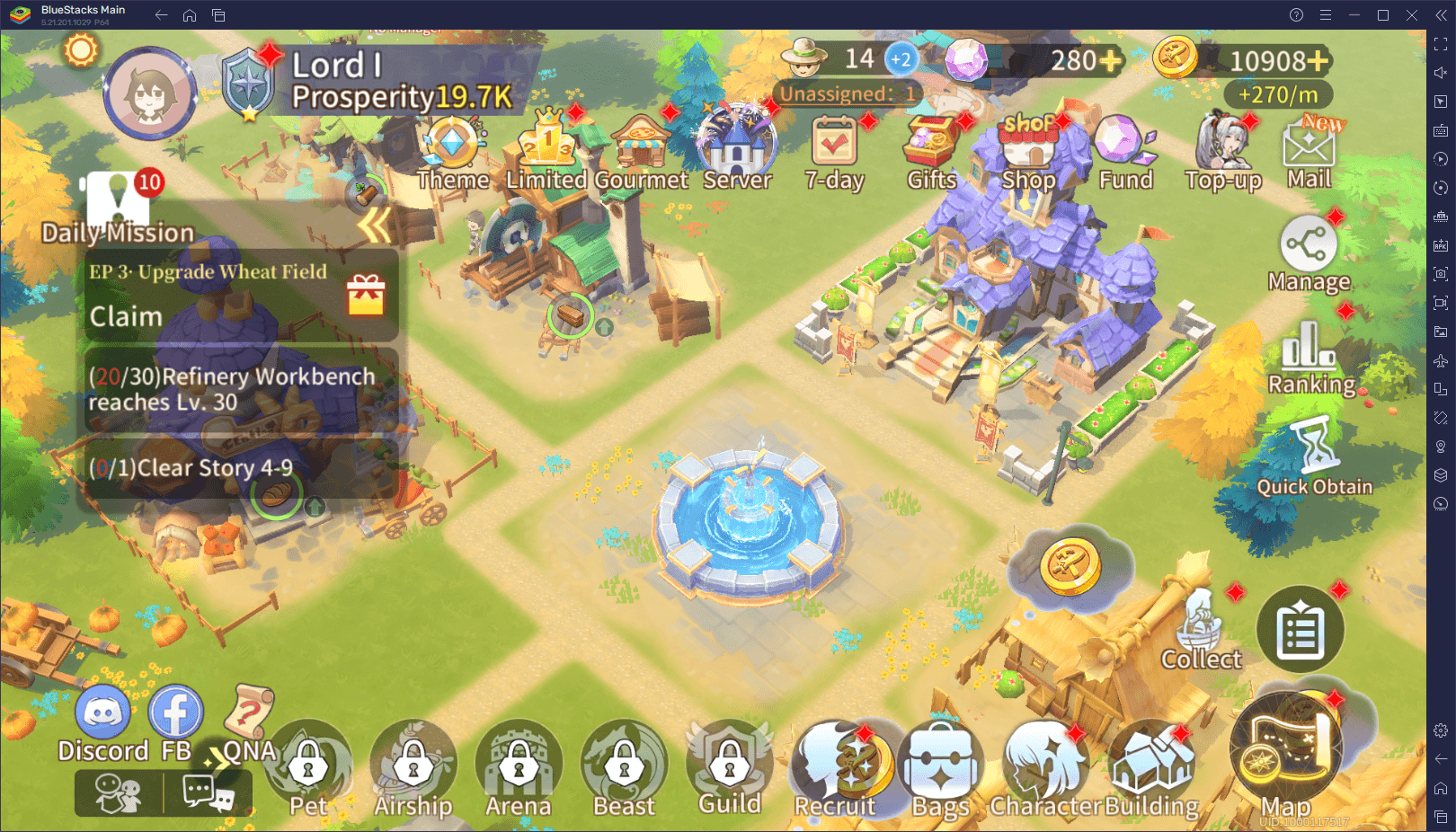
The soundtrack complements the visuals perfectly. With soothing melodies, it encourages you to take your time and enjoy the process of building and managing your town. This is a game that invites you to relax, jump into the role of a town mayor, and create something truly special, without the pressure of constant action or time limits.
Overall, Tales of Terrarum excels in creating a world that feels both cozy and engaging. The game’s atmosphere is one of its strongest points, drawing players in with its warm visuals and calming music.
Engaging City-Building Mechanics
At its core, Tales of Terrarum is a city-building game, and it does an excellent job of making the process of growing your town both satisfying and engaging. The gameplay revolves around constructing and upgrading various buildings, each of which serves a specific purpose. Whether you’re growing Wheat in the fields, processing Cotton in the Textile Mill, or refining Copper Ore in the Smelter, every building you add to your town contributes to its overall growth and prosperity.
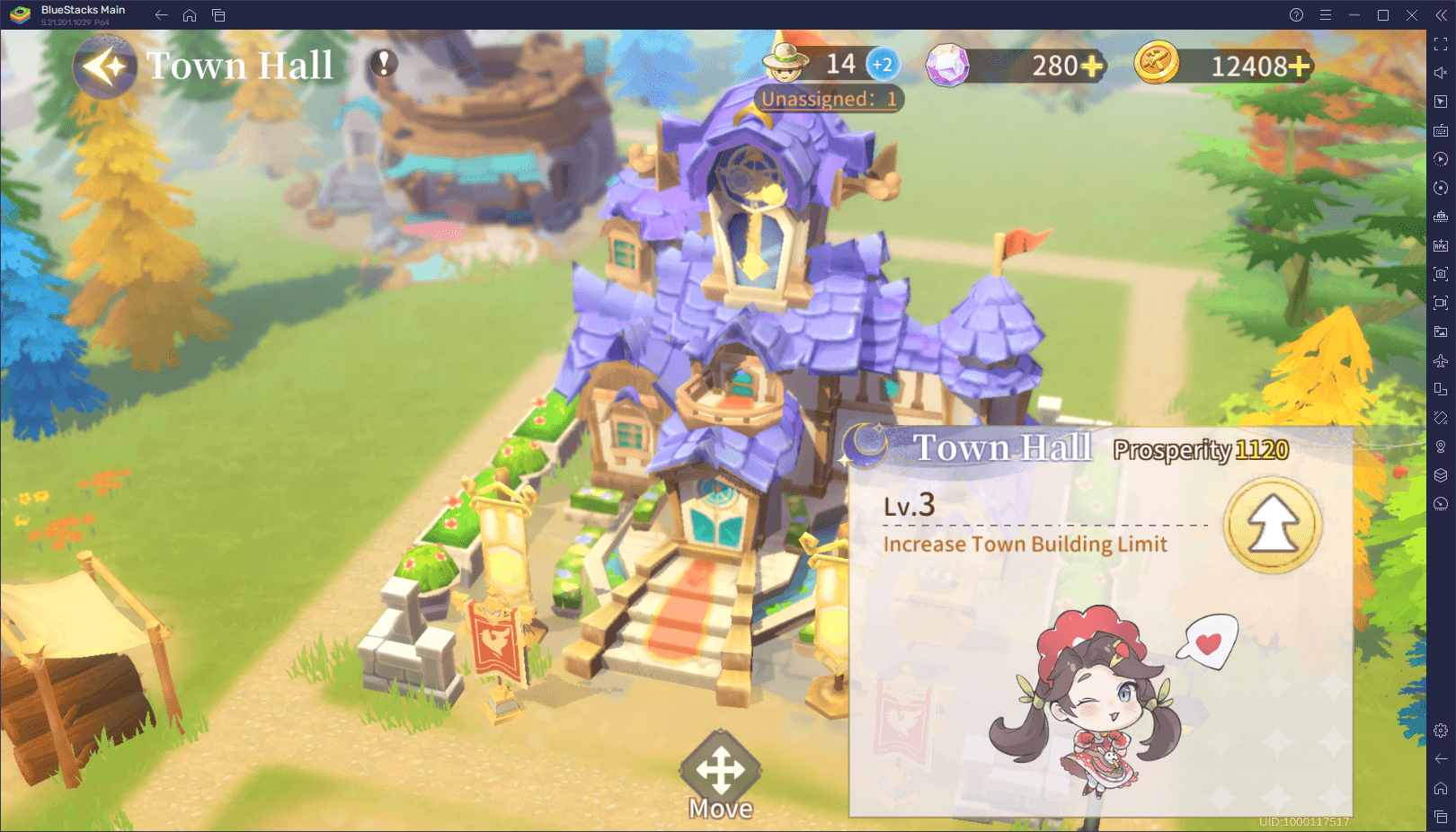
One of the game’s strengths is its resource management system, which is straightforward but deep enough to keep you invested. You’ll need to balance the production of raw materials like Wood, Wheat, and Iron Ore with their processing into more valuable goods like Planks, Bread, and Iron Ingots. This balancing act is at the heart of the game’s strategy, as you’ll need to ensure that your town’s needs are met while also preparing for future expansion.
The city-building aspect of Tales of Terrarum feels rewarding because each decision you make has a tangible impact on your town’s development. As you carefully plan and allocate resources, watching your town grow from a small settlement into a thriving city provides a satisfying sense of achievement.
Exploration and Adventure
While city-building is the main focus, Tales of Terrarum also incorporates elements of exploration and adventure, which add a layer of depth to the gameplay. As the mayor, you’re not just responsible for the town’s growth—you’re also in charge of leading expeditions into the wilds beyond your borders. This is where the game’s adventuring mechanics come into play.
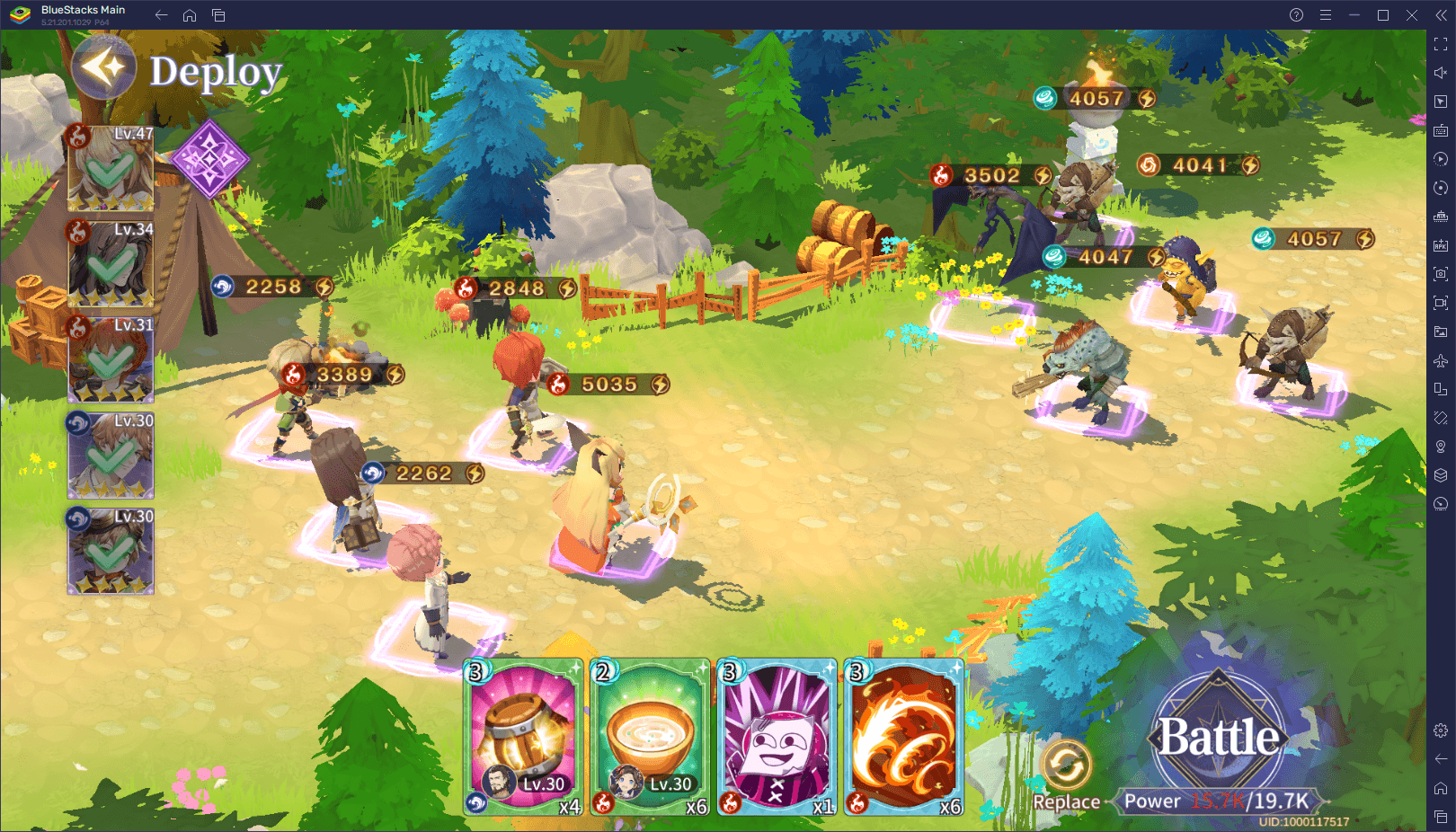
You’ll assemble teams of heroes to explore new territories, battle enemies, and gather valuable resources. The combat is automated, which keeps the focus on strategic planning rather than real-time action. However, you still have a role to play by crafting and using Skill Cards, which can turn the tide of battle in your favor. These cards are unlocked and crafted as you upgrade your heroes, adding an additional layer of progression to the game. Nevertheless, one of your priorities in this aspect will be unlocking and upgrading top-tier heroes for your team.
What’s particularly enjoyable about the exploration aspect is how it complements the city-building mechanics. The resources and treasures you acquire during these adventures directly feed back into your town’s growth, creating a satisfying loop of exploration, combat, and development. This synergy between the town management and adventure elements ensures that neither feels tacked on but rather integral to the overall experience.
Resource Production and Trade
Managing your town’s economy is another key aspect of Tales of Terrarum, and the game offers a variety of ways to do this. As you produce resources in your town’s various buildings, you’ll have opportunities to trade excess goods for Fora, the game’s currency. For example, the Harbor allows you to produce Fish, which can be sold via the Trade Ship, providing a steady stream of income to supplement your other activities.
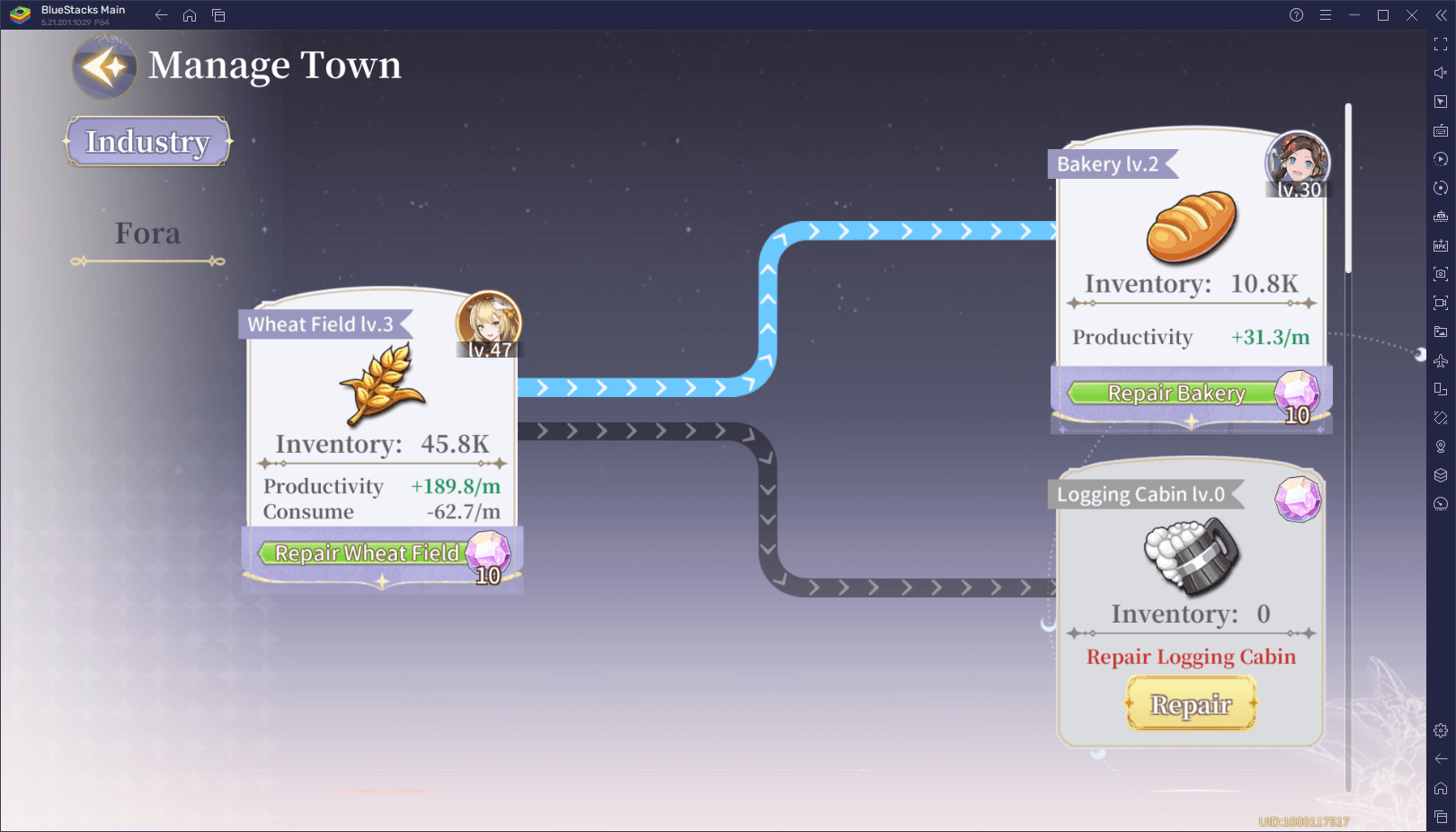
Trading is a simple yet effective way to keep your town’s finances in check, especially as your needs grow more complex. The ability to trade resources adds an economic layer that gives you more to think about as you plan your town’s development. Balancing production with trade ensures that you have enough resources for construction, upgrades, and exploration.
By carefully managing your resources and taking advantage of trading opportunities, you can ensure that your town continues to thrive. The game’s trade mechanics, while not overly complex, offer enough depth to make resource management feel meaningful without becoming overwhelming.
A Balanced Blend of Mechanics
One of the most impressive aspects of Tales of Terrarum is how it balances its various gameplay elements. The game combines city-building, resource management, exploration, and combat in a way that feels cohesive and well-paced. None of the mechanics feel tacked on or unnecessary; instead, they all contribute to the overall experience, making the game feel rich and varied.
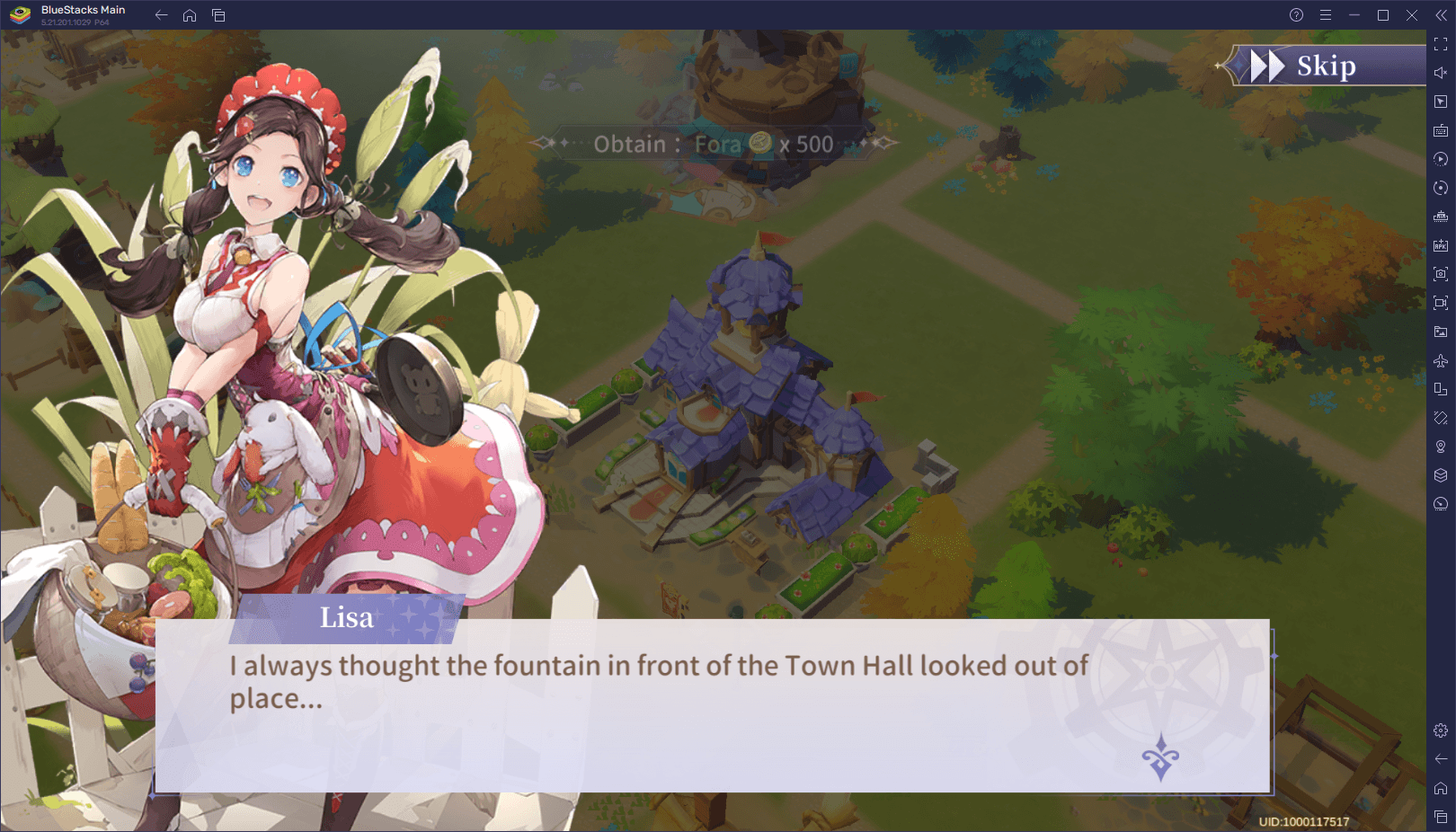
Unlike many games that push you to complete objectives quickly, this game allows you to play at your own pace. Whether you want to focus on expanding your town, exploring new lands, or simply enjoying the day-to-day management of your town’s economy, the game accommodates your playstyle.
This flexibility is one of the reasons why the game is so appealing—it’s as relaxing or as engaging as you want it to be. The balance between different gameplay mechanics ensures that players are constantly engaged, without feeling overwhelmed by too many systems at once. Get up to 20% cashback in nowbux gaming currency and big weekly rewards with every in-app purchase on games from the BlueStacks Store. Play on PC with BlueStacks to unlock more resources like summons, skins, cosmetics and more.
Conclusion: A Delightful Experience Worth Trying
Tales of Terrarum is a game that successfully blends the charm of city-building with the excitement of exploration and adventure. Its cozy, inviting world is a pleasure to inhabit, and the gameplay mechanics are engaging without being overwhelming. While it has a few minor issues, the overall experience is one that’s both relaxing and rewarding.
Struggling to get resources in your favourite games?
Do not fret, as nowbux allows players worldwide to claim up to 20% cashback and huge weekly rewards on all their in-game spendings in the following games on BlueStacks:
- Nexus: Nebula Echoes
- Magic Hero War
- Tales of Terrarum
- Zombieland: Doomsday Survivor
- Magic Chronicle: Isekai RPG
- Tales & Dragons: NewJourney
- Battle Bears Rainblow – Endless Runner
- Battle Bears Fortress – Tower Defense
- BLACKPINK THE GAME
- LaTale M: Side-Scrolling RPG
Whether you’re a fan of city-builders or just looking for something new to try, this game offers plenty of reasons to jump in and start building your perfect town. Just remember that you can play Tales of Terrarum on PC with BlueStacks to take your experience to the next level and have a much better time building up your town.















